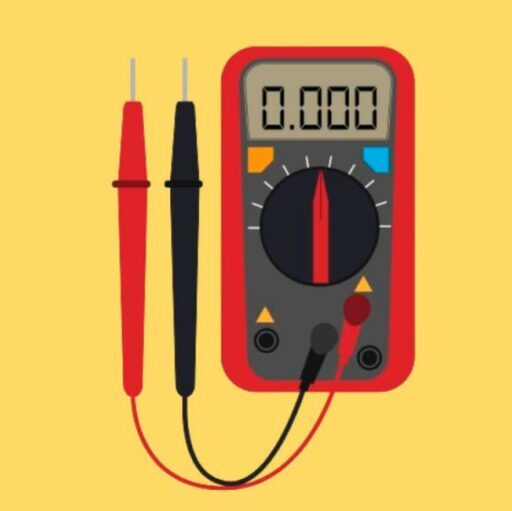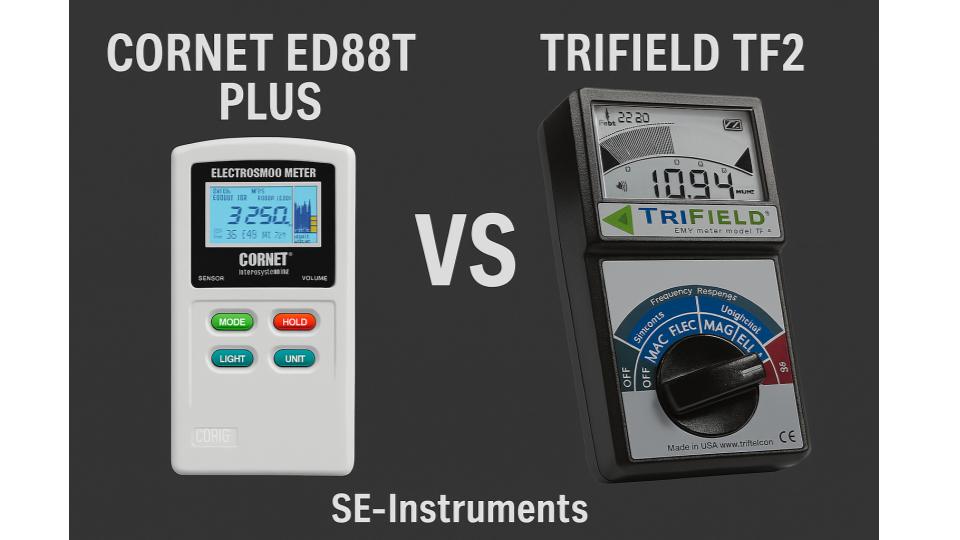If you’re looking for a reliable way to measure electromagnetic fields, two names come up again and again – the Cornet ED88T Plus and the Trifield TF2.
🏷️ EMF Meters on Amazon ⭐⭐⭐⭐
Both are versatile 3-in-1 meters designed to detect RF, electric, and magnetic fields, but they cater to different types of users. This quick comparison will help you understand their strengths, weaknesses, and which one might be the better fit for your needs.
Table of Contents
Cornet ED88T Plus
- A tri-mode EMF meter: RF (radio frequency), low-frequency magnetic (LF Gauss), and low-frequency electric (E-field) measurement.
- RF: Covers a frequency range from about 100 MHz to 8 GHz with high sensitivity.
- Magnetic (LF): Two selectable ranges — 50 Hz–1 kHz at 0.1–10 mG and 50 Hz–10 kHz at 1–600 mG.
- E-field: 50 Hz–50 kHz with sensitivity from 10 V/m to 1000 V/m.
- Additional features: built-in RF frequency counter, ultra-fast sampling, data logging, 5G band support, signal histogram, LED bar display.
Trifield TF2
- Also a 3-in-1 meter: AC magnetic, AC electric, and RF/microwave.
- Magnetic: 40 Hz–100 kHz, 3-axis, 0.1–100 mG.
- E-field: 40 Hz–100 kHz, 1–1000 V/m.
- RF: 20 MHz–6 GHz, range 1 µW/m² to about 20 mW/m².
- Features: 3-axis magnetic sensing, large LCD, adjustable backlight, audio alert, peak-hold for pulses, long battery life.
Comparison Table
| Feature / Capability | Cornet ED88T Plus | Trifield TF2 |
|---|---|---|
| Modes | RF, LF Magnetic, E-field | AC Magnetic, AC Electric, RF/Microwave |
| RF Range | 100 MHz – 8 GHz | 20 MHz – 6 GHz |
| LF Magnetic Range | 50 Hz–1 kHz (0.1–10 mG); 50 Hz–10 kHz (1–600 mG) | 40 Hz–100 kHz (0.1–100 mG), 3-axis |
| E-field Range | 50 Hz–50 kHz (10–1000 V/m) | 40 Hz–100 kHz (1–1000 V/m) |
| Axis (Magnetic) | Single-axis | 3-axis (true magnitude) |
| Accuracy (RF) | High sensitivity, no published ±% spec | ±20% at 1 GHz |
| Special Features | RF frequency counter, ultra-fast sampling, data log, histogram, LED display, 5G support | Audio indicator, peak-hold, weighted mode, large LCD, backlight |
| Ease of Use | More advanced — smaller screen, complex controls | Simpler controls, large display, beginner-friendly |
| Pricing | 💲 Check Price | 💲 Check Price |
Pros & Cons
Cornet ED88T Plus
Pros:
- Wide RF coverage up to 8 GHz, covering more modern 5G bands.
- Advanced detection tools like frequency counter, fast sampling, and data logging.
- Higher sensitivity for certain ranges and better for capturing short RF bursts.
- Versatile for monitoring Wi-Fi, smart meters, and cell towers.
Cons:
- Single-axis magnetic sensor requires repositioning for accurate readings.
- More complex to operate with a smaller display and more settings to learn.
Trifield TF2
Pros:
- User-friendly with a large, easy-to-read display.
- 3-axis magnetic measurement for quick, accurate readings without reorientation.
- Weighted mode to approximate human body exposure.
- Includes audio indicator, peak hold, long battery life, and protective case.
Cons:
- Narrower RF coverage, maxing out at 6 GHz, may miss some higher-frequency signals.
- Less sensitive for certain electric and RF field measurements.
- Not ideal for advanced RF analysis.
Recommended Usage Scenarios
- Choose the Cornet ED88T Plus if you need maximum RF sensitivity and range, especially for newer signals like 5G or pulse-based emissions. Best for advanced users or professional-level scanning.
- Choose the Trifield TF2 if you want simplicity and ease-of-use, especially for quick checks of magnetic fields and general EMF surveys.







